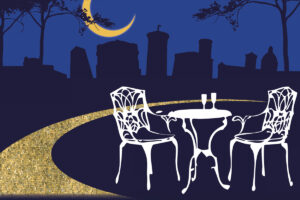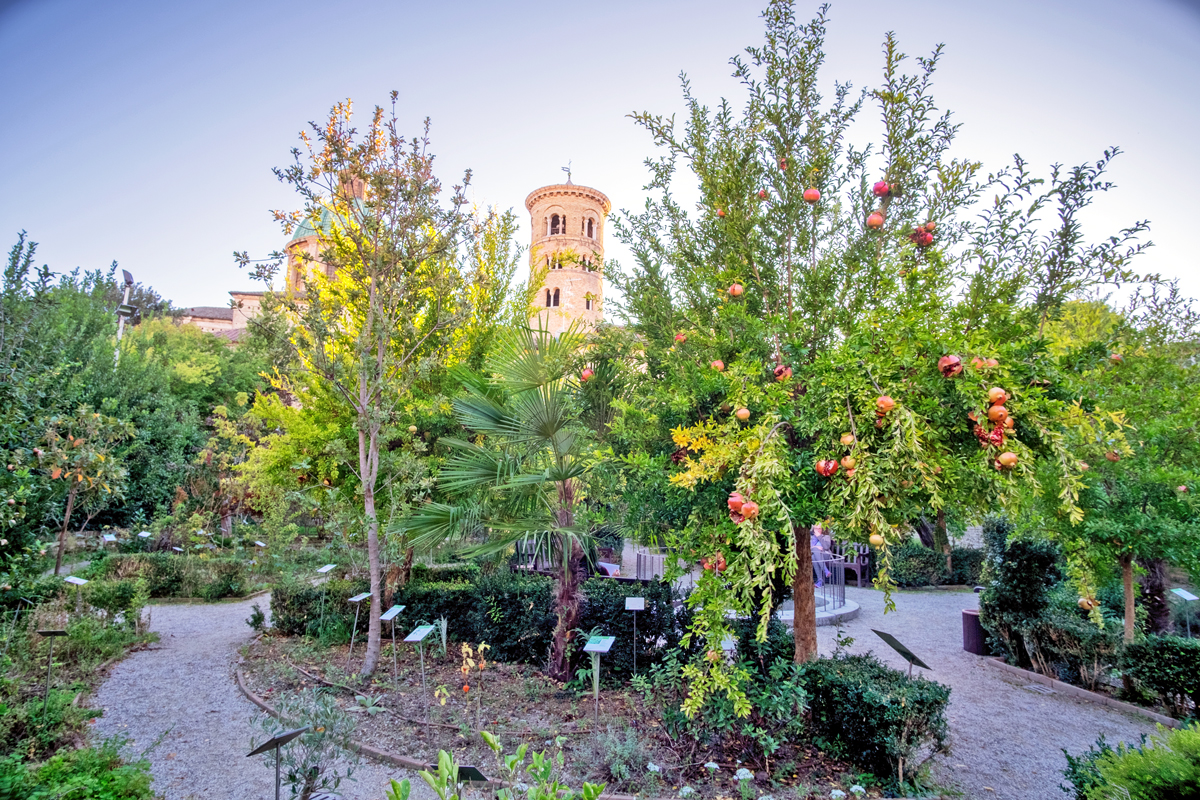This itinerary begins at the centre of the area that once hosted the primordial Roman settlement of Ravenna.
In this area there was also Porta Aurea, built by Emperor Tiberius and once the main access to the city. Our itinerary starts right from here. Not far, two very convenient parking lots: Port’Aurea and Guidarelli.
Piazza Duomo and pastries
Along via Port’Aurea you will encounter some nice shops and a well-known bakery, and you will also have a glimpse of the Cathedral of the city.
Piazza Duomo, uncommonly oval and enriched by a beautiful central flowerbed surrounded by tall maritime pines – the symbol of Ravenna – is located at the bottom of a series of narrow streets dotted withsmall shops and bars. The square is dominated by the Cathedral of the Resurrection of Our Lord Jesus Christ, built in 18th-century Baroque style on the foundations of an ancient Basilica of the 4th century. The other buildings overlooking the square are the round Church of Santa Giustina, the archiepiscopal seminary and the 17th-century palace of the counts Fantuzzi Farini.
The religious complex of the Cathedral also includes the Archiepiscopal Museum, the bell tower and most of all the Neonian Baptistery, a rare example of early-Christian art with a peculiar octagonal plant and brick walls. Also called Orthodox Baptistery, it owes the adjective “Neonian” to Bishop Neon, who had a former construction renovated and made it how we see it today.
Porticoes, cafés and gardens
The gentle curve of via Gioacchino Rasponi will firstly lead you to the small piazzetta Paolo Serra, from which you can access the charming Rasponi Garden (or Garden of Forgotten Herbs) – that also hosts a nice bistrot – then to Piazza J. F. Kennedy. Renovated and pedestrianized at the beginning of 2016, it is a true open-air parlour, surrounded by prestigious buildings hosting cafés, bars, restaurants and ice-cream shops. This square was once the place of the central market, originated in the 1930s from teh demolition of an entire block. On one side, you can admire the imposing Casa del Mutilato di Guerra and its access staircase, while on the other the stunning Palazzo Rasponi dalle Teste, hosting some offices of the Municipality and attractive location for public events.
After the square, via Gioacchino Rasponi becomes a gallery of coloured shop windows and porticoes with many shops, cafés and bars. Before getting to Piazza XX Settembre, we recommend a detour along via Zirardini, an open-air gallery hosting interesting photo and art exhibition all year round.







